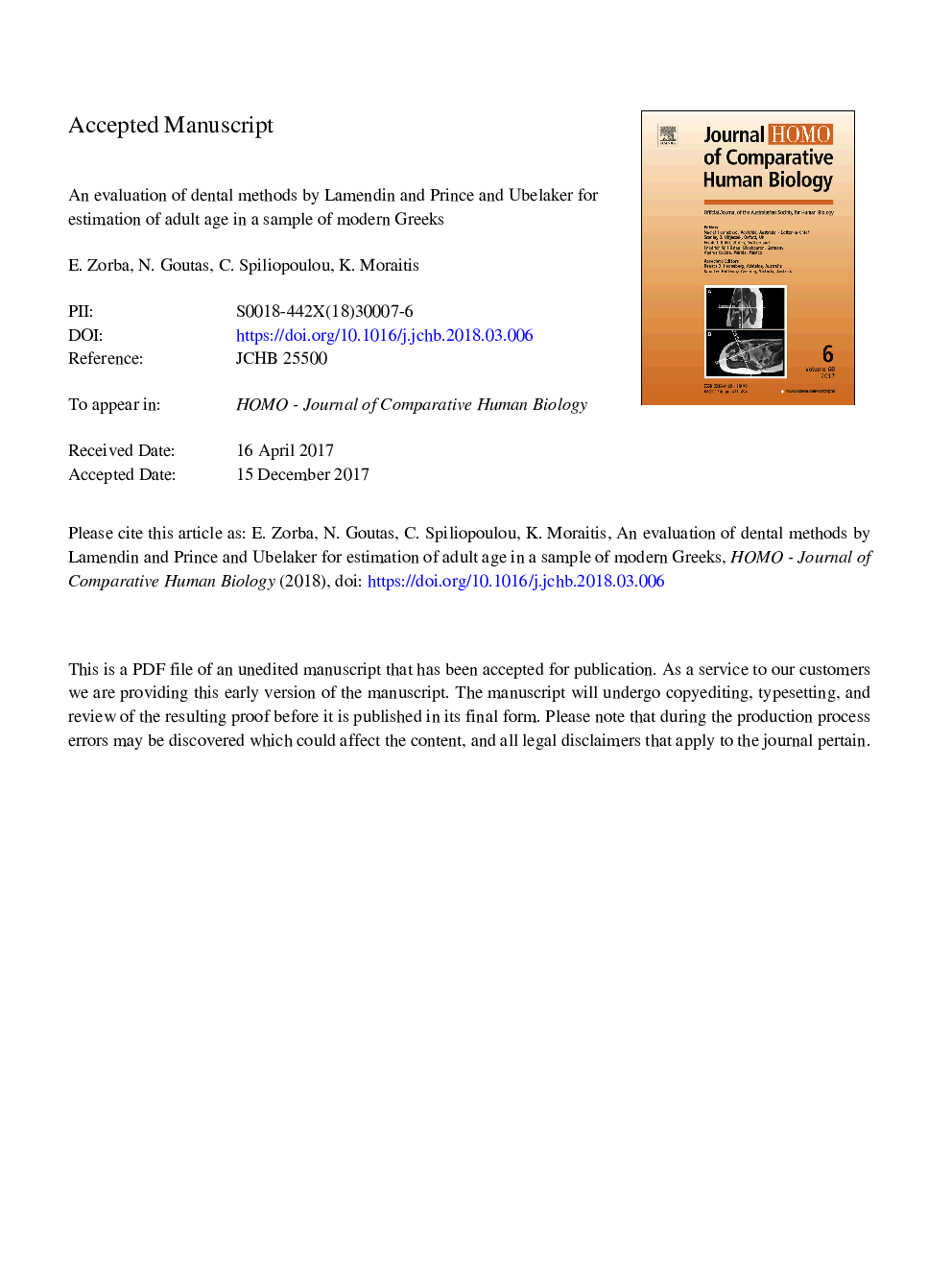| Article ID | Journal | Published Year | Pages | File Type |
|---|---|---|---|---|
| 6554435 | HOMO - Journal of Comparative Human Biology | 2018 | 33 Pages |
Abstract
Teeth can be used as accurate tools in age-at-death estimation in forensic cases. No previous data exist on estimating age from teeth in a modern Greek population. The aim of this study was to evaluate Lamendin's and Prince and Ubelaker's ageing methods on a modern Greek skeletal sample. In total, 1436 single-rooted teeth from 306 adult individuals (161 males and 145 females) were examined. Only measurements of periodontosis and translucency showed positive correlation with age. Results showed a bias - an overestimation for ages under 40â¯years and an underestimation over this age. However, the use of wider age groups proved to be more appropriate. Low values of error were observed for the group of middle-aged individuals. In conclusion, both methods can be considered accurate in estimating age-at-death of middle-aged individuals. This study provides more information about the accuracy and applicability of these dental methods on modern European populations.
Related Topics
Life Sciences
Agricultural and Biological Sciences
Ecology, Evolution, Behavior and Systematics
Authors
E. Zorba, N. Goutas, C. Spiliopoulou, K. Moraitis,
